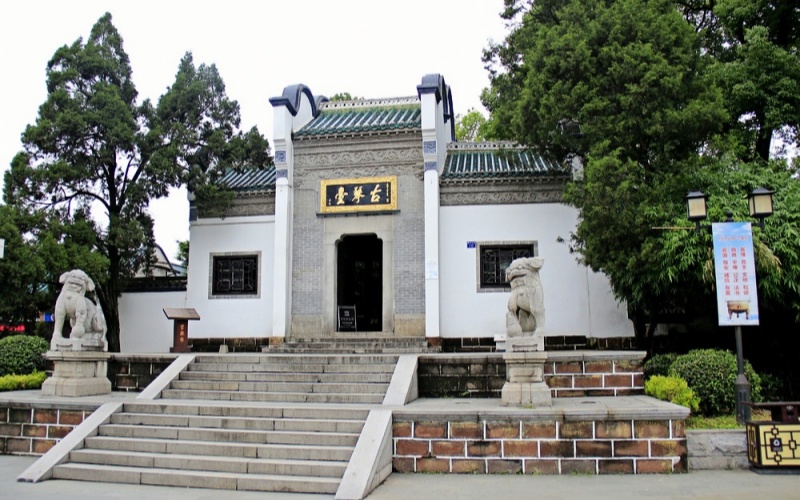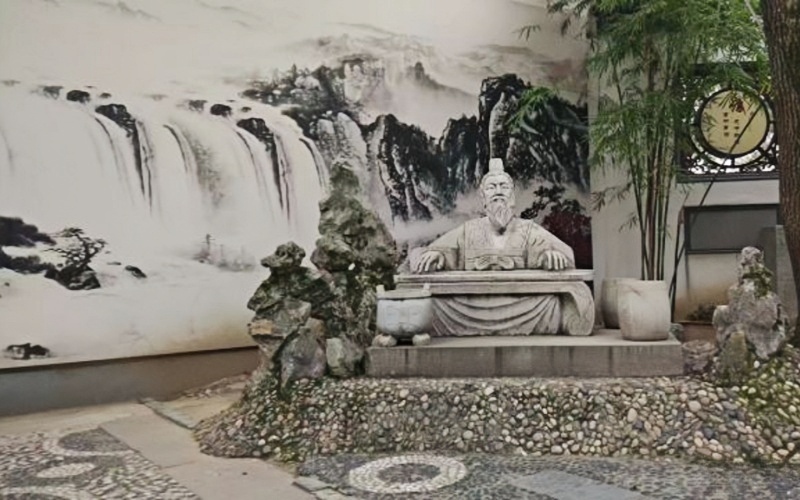Ancient Lute Pavilion, also known as Guqin Terrace or 古琴台 Gu Qin Tai in Chinese, is located on the banks of Moon Lake at the foot of Guishan Mountain in Hanyang District, Wuhan City, Hubei Province.

In order memorize Yu Boya ( a famous proficient in the art of qin lived in Hubei during the Spring-Autumn & Warring State Period), the pavilion was first built in the Northern Song Dynasty and rebuilt in the early years of the Qing Dynasty's Jiaqing period (1796 AD).
According to legend, during the Spring and Autumn Period, the qin player Yu Boya of the State of Chu played the qin here. The woodcutter Zhong Ziqi on the mountain could recognize its rhythm and knew that its aspirations were in the mountains and flowing waters. Boya regards Shiziqi as a confidant. A few years later, Boya passed by Guishan again and learned that Ziqi had passed away. Overwhelmed with grief, he broke the strings of the qin and never played again for the rest of his life. Hence, this pavilion is also named Boya Plateform.

The Guqin Terrace architectural complex covers an area of about 15 acres. In addition to the main hall building, there are also courtyards, forest gardens, flower beds, tea rooms, etc. The layout is exquisite and the hierarchy is distinct. There is a zither stand in front of the hall. It is a square stone platform made of White Marble, about 20 square meters. It is said that it is the place where Boya plays the zither.
As a Chinese music cultural heritage site, It is one of the three major scenic spots in Wuhan, along with the Yellow Crane Tower and Qingchuan Pavilion. Nowadays, it is built as a national AAA level scenic spot, a key cultural relic protection unit in Hubei Province, and one of the cultural relics and tourism landscapes in Wuhan City.
Travel Tips
Address: No. 10 Qintai Avenue, Hanyang District, Wuhan City, Hubei Province
Telephone: 027-84834187
Opening Hours: 8:00-17:00 throughout the year
Admission ticket : CNY 15
